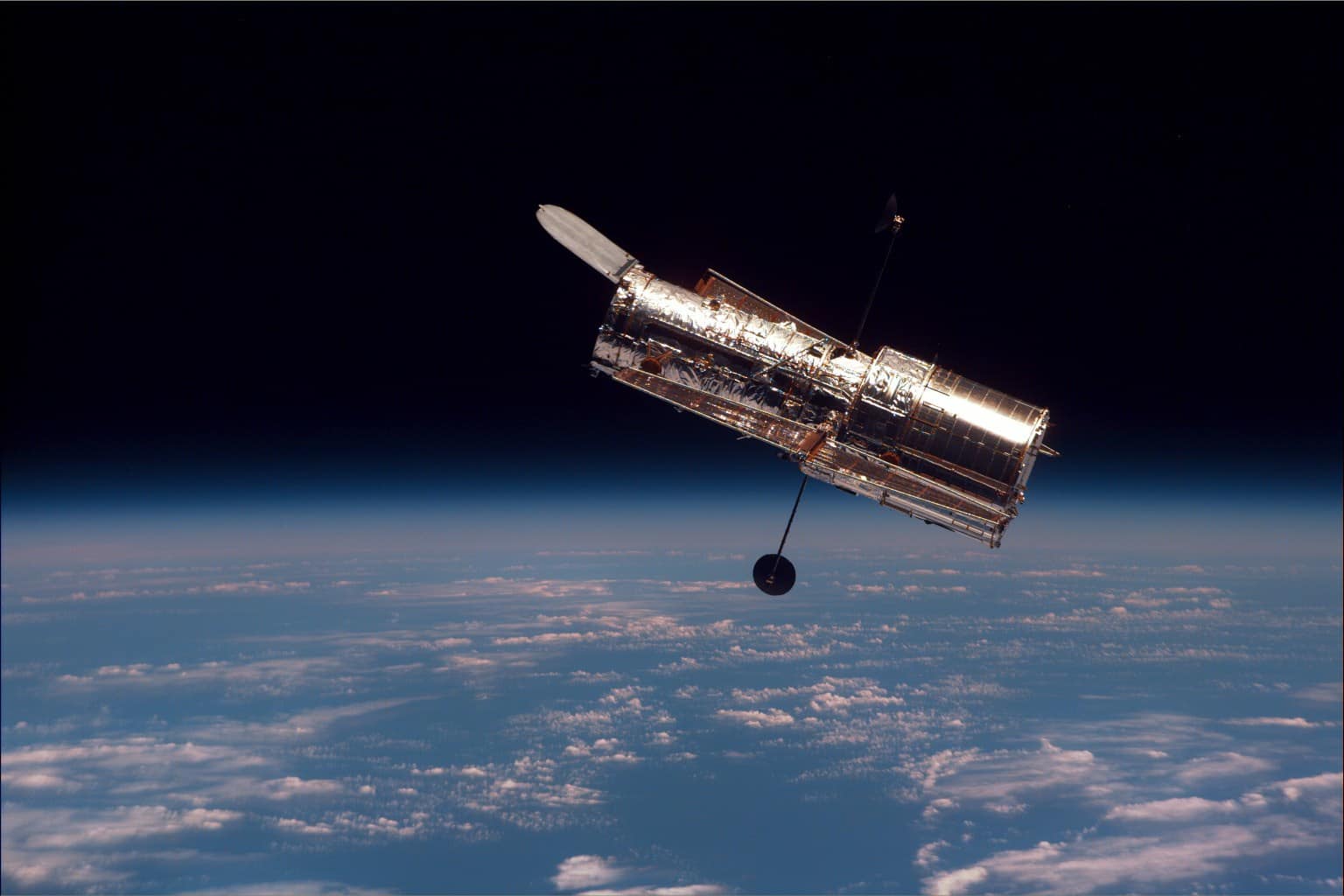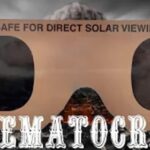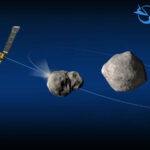Twinkle, Twinkle Little Star,
How I Wonder How the Measured You
From So Afar
So what kind of equipment can measure stars, that NASA tells us are so far away it is impossible to fathom such distance.
A light-year is how astronomers measure distance in space. It’s defined by how far a beam of light travels in one year – a distance of six trillion miles.
Throughout the universe, all light travels at exactly the same speed: about 670 million miles per hour.
The main reason for using light years, however, is because the distances we deal with in space are immense. If we stick to miles or kilometers we quickly run into unwieldy numbers just measuring the distance to the nearest star: a dim red dwarf called Proxima Centauri that sits a mere 24,000,000,000,000 miles away
The Milky Way galaxy in which our sun and all the stars we see at night reside spans 100,000 light-years from one end to the other. Putting that into perspective, the duration of recorded human history is roughly 5,000 years. So light from a star at one end of our galaxy takes 20 times longer than all of recorded history to get to the other end.
A galaxy whose light took 14 billion years to reach our little planet has, in the intervening aeons, moved even further away. The current physical distance to that remote beacon, if we stopped the universe from expanding and stretched out a really long tape measure, is just over 46 billion light years! Even in light years, measuring distances across the universe becomes unwieldy. But measuring in something familiar, like miles, is truly humbling. From here to the edge of our vision spans a distance of approximately 276,000,000,000,000,000,000,000 miles.
And it’s getting bigger every day.(Source. Earthj/sky.org)
So we are being told that NASA earth made instruments can measure distances using light wave frequencies able to record how far, how hot or cold, how big and how bright to distances of 276 TRILLION MILLION Miles away.
Through atmospheres, solar radiation and solar flares. Through micrometeroids, comet tails and time warps. Through light bending gravity pulls by planetary orbits and the Asteroid belt.
Damn these guys at NASA are Goooooood!
Or are they?
If you wanted to make someone feel really, really insignificant, you’d tell them they are just a small, tiny, tiny cog in a very, very Big Wheel.
This is why the Vatican and its secrete societies of the 15th and 16th centuries created the heliocentric theory and doused 3500 years of a geocentric world view. The Kingdom of God is in the church and power that you cannot fathom, so give us your laws, your money and your soul.
Yet why has no one even questioned how the hell they can measure such light from such distance.
And doesn’t light, like a flashlight spread and flair the farther out it goes? So how can they be sure the light is from a star some godzillion miles away?
****

James Hubble Telescope launched to take pictures away from limits of Earth’s atmosphere, NASA tells us. (NASA Image)
The Hubble Space Telescope (HST) is a space telescope that was launched into low Earth orbit in 1990, and remains in operation. With a 2.4-meter (7.9 ft) mirror, Hubble’s four main instruments observe in the near ultraviolet, visible, and near infraredspectra. The telescope is named after the astronomerEdwin Hubble.
The Hubble Space Telescope is able to measure wavelengths from about 0.1150 to 2 micrometers, a range that covers more than just visible light. These measurements of light enable astronomers to determine certain physical characteristics of objects, such as their temperature, composition, and velocity. (Source)
Ultraviolet radiation has wavelengths of 10 – 310 nm (about the size of a virus). Young, hot stars produce a lot of ultraviolet light and bathe interstellar space with this energetic light.
Visible light covers the range of wavelengths from 400 – 700 nm (from the size of a molecule to a protozoan). Our sun emits the most of its radiation in the visible range, which our eyes perceive as the colors of the rainbow. Our eyes are sensitive only to this small portion of the electromagnetic spectrum.
Infrared wavelengths span from 710 nm – 1 millimeter (from the width of a pinpoint to the size of small plant seeds). At a temperature of 37 degrees C, our bodies give off infrared wavelengths with a peak intensity near 900 nm.
NASA tells us that it measures these waves by recording their light at one location, then another in six months. The precision for such distances, given motions of planets and solar systems, some tens and hundreds of thousands of miles, is truly unbelievable, yet that is what we are told.
****
Astrometry, Measuring the Great Distance, Size, Shape and Temperature of the Stars?
Astrometry is the branch of astronomy that involves precise measurements of the positions and movements of stars and other celestial bodies. The information obtained by astrometric measurements provides information on the kinematics and physical origin of our Solar System and our galaxy, the Milky Way.
James Bradley first tried to measure stellar parallaxes in 1729. The stellar movement proved too insignificant for his telescope, but he instead discovered the aberration of light and the nutation of the Earth’s axis. His cataloguing of 3222 stars was refined in 1807 by Friedrich Bessel, the father of modern astrometry. He made the first measurement of stellar parallax: 0.3 arcsec for the binary star 61 Cygni.
Bessel was a major figure in astronomy during his lifetime. He was elected a fellow of the Royal Society, a foreign member of the Royal Swedish Academy of Sciences in 1823, and the largest crater in the Moon’s Mare Serenitatis is named Bessel after him. Bessel’s work in 1840 contributed in some degree to the discovery of Neptune. In 1832, he was elected a Foreign Honorary Member of the American Academy of Arts and Sciences.[13] Bessel won the Gold Medal of the Royal Astronomical Society in 1829 and 1841.

Stellar parallax is parallax on an interstellar scale: the apparent shift of position of any nearby star (or other object) against the background of distant objects. Created by the different orbital positions of the Earth, the extremely small observed shift is largest at time intervals of about six months, when the Earth arrives at exactly opposite sides of the Sun in its orbit, giving a baseline distance of about two astronomical units between observations. The parallax itself is considered to be half of this maximum, about equivalent to the observational shift that would occur due to the different positions of the Earth and the Sun, a baseline of one au.
Stellar parallax is so difficult to detect that its existence was the subject of much debate in astronomy for hundreds of years. It was only first proven in 1838 when Friedrich Bessel made the first successful parallax measurement ever, for the star 61 Cygni, using a Fraunhofer heliometer at Königsberg Observator
The cosmic distance ladder (also known as the extragalactic distance scale) is the succession of methods by which astronomers determine the distances to celestial objects. A real direct distance measurement of an astronomical object is possible only for those objects that are “close enough” (within about a thousand parsecs) to Earth. The techniques for determining distances to more distant objects are all based on various measured correlations between methods that work at close distances and methods that work at larger distances. Several methods rely on a standard candle, which is an astronomical object that has a known luminosity.
The ladder analogy arises because no one technique can measure distances at all ranges encountered in astronomy. Instead, one method can be used to measure nearby distances, a second can be used to measure nearby to intermediate distances, and so on. Each rung of the ladder provides information that can be used to determine the distances at the next higher rung.
Parsec
| Parsec | |
|---|---|
 A parsec is the distance from the Sun to an astronomical object that has a parallax angle of one arcsecond. (the diagram is not to scale). |
A parsec (symbol: pc) is a unit of length used to measure the astronomically large distances to objects outside the Solar System. One parsec is the distance at which one astronomical unit subtends an angle of one arcsecond.[1] About 3.26 light-years (31 trillion kilometres or 19 trillion miles) in length, the parsec is shorter than the distance from our solar system to the nearest star, Proxima Centauri, which is 1.3 parsecs from the Sun.[2] Nevertheless, most of the stars visible to the unaided eye in the nighttime sky are within 500 parsecs of the Sun.
***
A lot of gobbly-gook of language but not a mention of how they can be so precise and accurate over such great distance all the while needing a vacuum and not debris or time/space warp, etc.
Hubble is a telescope that allegedly uses high powered mirrors to see into Deep Space, but what how what captures light from distance so great we cannot even imagine?

As you can see the entire telescope is optical in nature without only little reference to “Fixed-head star tracker” and “Radial science instrument module”.
Also optimized for ultraviolet observations were the FOC and FOS, which were capable of the highest spatial resolution of any instruments on Hubble. Rather than CCDs these three instruments used photon-counting digicons as their detectors. The FOC was constructed by ESA, while the University of California, San Diego, and Martin Marietta Corporation built the FOS.[38]
The final instrument was the HSP, designed and built at the University of Wisconsin–Madison. It was optimized for visible and ultraviolet light observations of variable stars and other astronomical objects varying in brightness. It could take up to 100,000 measurements per second with a photometric accuracy of about 2% or better.
A digicon detector is a spatially resolved light detector using the photoelectric effect directly. It uses magnetic and electric fields operating in a vacuum to focus the electrons released from a photocathode by incoming light onto a collection of silicon diodes. It is a photon-counting instrument, so most useful for weak sources.
Digicon detectors were used on the original instruments for the Hubble Space Telescope
****

Asteroid Belt according to NASA
The first spacecraft to traverse the asteroid belt was Pioneer 10, which entered the region on July 16, 1972. At the time there was some concern that the debris in the belt would pose a hazard to the spacecraft, but it has since been safely traversed by 11 Earth-based craft without incident
Really?
These guys at NASA are goooooood!
The star measuring devices must operate in a vacuum we are told by the scientists, yet space is anything but a vacuum.
For example:
Micrometeoroids are very small pieces of rock or metal broken off from larger chunks of rock and debris often dating back to the birth of the solar system. Micrometeoroids are extremely common in space. Tiny particles are a major contributor to space weathering processes.
Micrometeoroids pose a significant threat to space exploration.[5] Their velocities relative to a spacecraft in orbit average 10 kilometers per second (22,500 mph),[5] and resistance to micrometeoroid impact is a significant design challenge for spacecraft and space suit designers (See Thermal Micrometeoroid Garment).
***
Cosmic dust is dust which exists in space. It is for the most part a type of small dust particles which are a few molecules to 0.1 µm in size. A smaller fraction of all dust in space consists of larger refractory minerals that condensed as matter left the stars. It is called “stardust” and is included in a separate section below.
Cosmic dust can be further distinguished by its astronomical location, there is also intergalactic dust, interstellar dust, interplanetary dust (such as in the zodiacal cloud) and circumplanetary dust (such as in a planetary ring). In the Solar System, interplanetary dust causes the zodiacal light.
Then we have the asteroid belts and thousand mile long comet trails,
Solar flares and Solar radiation.
****
Additionally we have light bending time warp as postulated by Ol A. Einstein himself.
General relativity
The bending of light by gravity can lead to the phenomenon of gravitational lensing, in which multiple images of the same distant astronomical object are visible in the sky. General relativity also predicts the existence of gravitational waves, which have since been observed indirectly; a direct measurement is the aim of projects such as LIGO and NASA/ESA Laser Interferometer Space Antenna and various pulsar timing arrays. In addition, general relativity is the basis of current cosmological models of a consistently expanding universe.

Additionally, time is warped according to Einstein and NASA
Any object with mass warps the space-time around it, in much the same way as a heavy object deforms a stretched elastic sheet, explained study leader Ignazio Ciufolini of the Universit? di Lecce in Italy.(Source, Space.com)
****
It is impossible for NASA to have measured stars hundreds of trillions, much less millions of miles away when Albert, et. al tell us the time is warped, light is bent and NASA admits that itself that space is not in any way a vacuum.
They could not possible use the vacuum needed measurement devices stated, over trillion of miles, to tell us the shape, size, temperature, distance and temperature.
Especially with balls spinning like Jupiter at some 57,000 mph and our Solar system trucking around the Milkyway at over 500,000 mph, like NASA tells us.
It’s all a 500 yr. lie. All of it.







![“PLANE OF THE HUMANISTS” [ a worldview re-view… ]](https://christianobserver.net/wp-content/uploads/2022/09/Screenshot-2022-09-24-090743-150x150.jpg)



